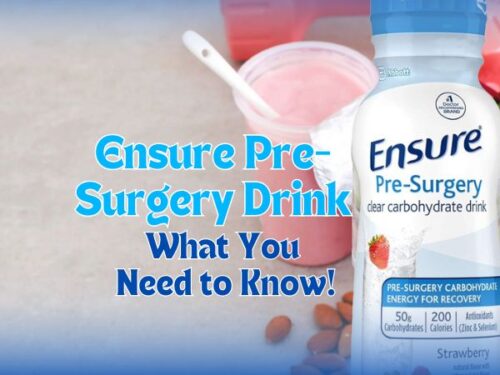Choosing the Right IV Solution for Different Medical Needs
Do you often feel dizzy and often have low energy levels? The problem might be chronic dehydration which, according to the National Institutes of Health (NIH), affects nearly 75% of the US population. If your healthcare provider seems fit, she may recommend you an IV solution administration as a quick fix. As a matter of fact, dehydration is not the only medical condition that can be treated by IV solutions. Rather, several kinds of IV fluids can be administered in many cases for different purposes. Therefore, it is important to learn how to choose the right IV solution for the right medical condition.

IV solutions are used in hospitals on a daily basis for multiple conditions
In this article, let us discuss the types of IV solutions, their composition, as well as their suitability for different medical needs. In addition, a guide on how to choose the right IV solution for a patient has also been incorporated.
Commonly Used Intravenous Fluids
In healthcare facilities, IV fluid therapy is one of the most utilized methods both during surgical as well as non-surgical procedures. In this regard, the following table enlists some of the most commonly used intravenous solutions, their composition, as well as their tonicity which can serve as a guide while learning how to choose the right IV solution:
| IV Solution | Composition | Tonicity | pH | Osmolarity
(mOsm/L) |
| 0.9% Normal Saline | Sodium chloride | Isotonic | 5.5 | 286 |
| 5% Dextrose in Water (D5W) | Dextrose | Isotonic | 4.3 | 252 |
| 5% Dextrose in Water (D5W) | Dextrose | Hypotonic | 4.3 | 252 |
| Lactated Ringer’s Solution | Sodium chloride,
Sodium lactate, Potassium chloride |
Isotonic | 6.5 | 273 |
| 0.45% Sodium Chloride | Sodium chloride | Hypotonic | 4.5 to 7.0 | 154 |
| 3% Sodium Chloride | Sodium chloride | Hypertonic | 5.8 | 1027 |
| 5% Dextrose and 0.45% Sodium Chloride | Sodium chloride,
Dextrose |
Hypertonic | 4.3 | 406 |
| 5% Dextrose and Lactated Ringers Solution | Sodium chloride,
Sodium lactate, Potassium chloride, Dextrose |
Hypertonic | 6.6 | 530 |
It should be kept in mind that the solvent used in all of the above-mentioned solutions is sterile water for injection which has the following properties:
1. Sterility
Sterility means the water is free from bacteria as well as any other types of contaminants. It is an essential parameter to keep in mind when it comes to learning how to choose the right IV solution.
2. Non-Pyrogenicity
Non-pyrogenicity refers to the absence of pyrogens i.e. the substances responsible for raising body temperature and thus causing fever.
3. Hypotonic Nature
Sterile water for injection is hypotonic and has less solute concentration as compared to our body cells.
4. Absence of Anti-Microbial Agents
There are no antimicrobial agents or preservatives added to sterile water for injection.
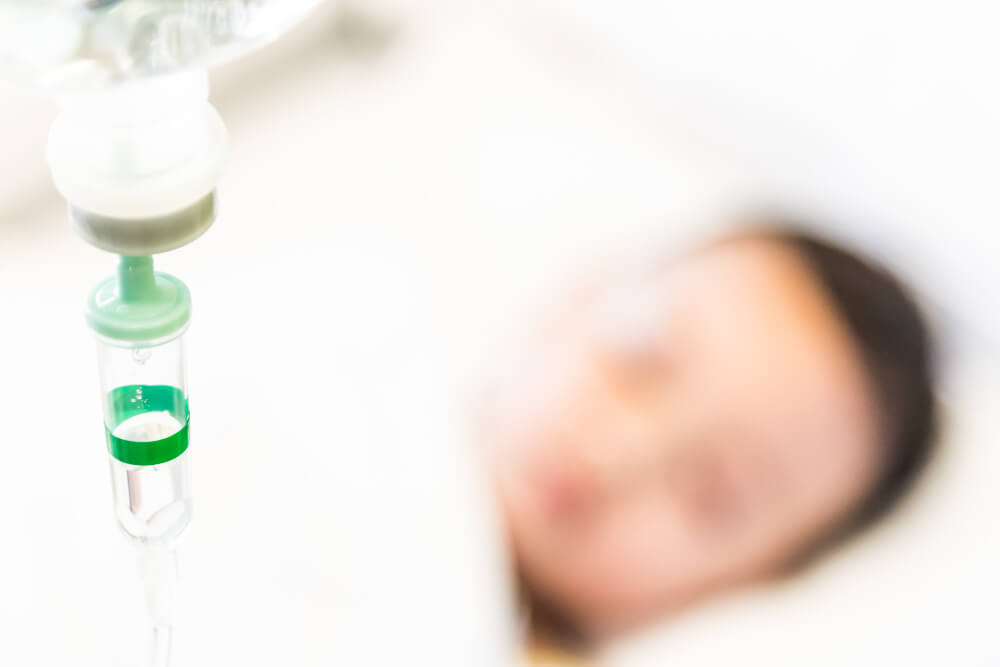
All IV fluids are sterile and that’s why completely free from microbes
Selecting the Right Solutions for IV Fluid Therapy in Specific Medical Conditions
While learning how to choose the right IV solution for a patient, it is necessary to evaluate the patient’s needs first. This information will then serve as a basis for making a choice.
Assessing Patient Needs for IV Therapy
When it comes to learning how to choose the right IV solution for a patient, there are several factors that should be taken into consideration such as:
- Type of trauma/disease
- Type of body fluid lost
- Imbalance of a specific electrolyte
- Presence of acidosis or alkalosis in the body
Once the assessment is complete, the healthcare professional has to decide which IV solution should be administered. The following sections highlight some of the medical conditions and the suitable IV solutions for their management:
Burns
If a patient is suffering from burns, it is expected that the condition will be associated with the following:
- Fluid loss
- Electrolyte imbalance
- Lowered oxygenation of the tissues
- Elevated risk of hypovolemia shock i.e. low levels of body fluids
- Elevated risk of acute kidney injury
For the management of the existing issues, the following steps should be taken:
Do’s
Ideally, the use of lactated Ringer’s solution, also known as Ringer’s lactate solution or RL, is recommended while learning how to choose the right IV solution for burns. This is because the solution is rich in salts and can help restore the depleted levels of electrolytes in the body. For replenishing the blood sugar level and giving some calories to the patient, the lactated Ringer’s solution is mixed with dextrose solution.
Don’ts
The use of 0.45% sodium chloride solution should not be used for burns as this can worsen the hypovolemic state associated with burning. For reference, hypovolemia is a condition in which there is lowered extracellular fluid volume in the body. Similar is the case with 5% dextrose in water as it is likely to cause the same issue. Hence, these should be kept in mind while learning how to choose the right IV solution for burns.
Trauma
When a patient comes with an injury or a trauma, the physician needs to evaluate the type of injury and then the type of body fluid lost. This helps them choose the right IV solution. Generally, traumatic injury is often associated with hypovolemia as well as an elevated risk of ischemic brain damage. As a preventive approach, the following can be done:
Do’s
While learning how to choose the right IV solution for trauma, the first preference should be given to normal saline solution. The use of 0.9% normal saline (NS) is particularly considered ideal in patients who have acute brain injury. In addition, lactated Ringer’s solution can also be added. This is because it is known for the management of acidosis which is often associated with traumatic injuries.
In addition, the risk of hypochloremia or lower levels of chloride in the body is also avoided as both solutions are rich in it. Furthermore, the employment of 5% dextrose in water in 0.9% sodium chloride or 5% dextrose in water in 0.45% sodium chloride is also an option.
Don’ts
Like in burns, fluid loss is also significant after an injury or a trauma. Therefore, it is essential to avoid using 0.45% sodium chloride solution as well as 5% dextrose in water. Both of these are known for further reducing the level of fluids in the body thus causing severe hypovolemia which can lead to organ damage or death in the worst case scenario.

Hospitalized patients are on IV solutions for electrolyte as well as nutrient replenishment
Electrolyte Imbalance
Electrolyte imbalance is a state in which the normal levels of electrolytes in the body are depleted. This hinders many body functions as these electrolytes seem to do a lot for us. Therefore, their replenishment is important. For this purpose, when it comes to learning how to choose the right IV solution, the following could be used:
Do’s
For the management of electrolyte imbalance, normal saline should be administered. It helps treat hypovolemia as well as hemorrhage. In addition, people with sepsis also find it beneficial when they are administered with normal saline.
Both 0.9% NS as well as 0.45% sodium chloride solution can be given to achieve these effects. For treating electrolyte imbalance in diabetics, 5% dextrose in water is also a great choice. This can also be given in combination with lactated Ringer’s solution.
Don’ts
IV solutions which are hypotonic in nature are not considered suitable for people dealing with electrolyte imbalance. This is because these can elevate the risk of hyponatremia or low levels of sodium in the body. Moreover, these solutions have less solute and more water and thus push the fluids out of the blood vessels into the intracellular space. This further worsens the electrolyte balance of the body.
Dehydration
IV solutions become essential when it comes to treating dehydration because they are the quickest way to rehydrate the drained body by fluid management. Due to the presence of different salts in IV solutions, these also help balance the disturbed levels of electrolytes. In this regard, the following should be kept in mind while learning how to choose the right IV solution for dehydration:
Do’s
The first IV solution you need to give to a dehydrated patient is normal saline. As it is rich in sodium chloride, normal saline helps keep the water inside the body and thus dehydration is reversed. Apart from this, lactated Ringer’s solution is also a good choice. It not only helps fight dehydration but is also ideal for the prevention of hypovolemic shock. Dextrose in water 5% can also be combined for some energy. In addition, any other hypotonic solution is beneficial.
Don’ts
Hypertonic solutions should not be employed for managing dehydration as they tend to worsen the condition instead of improving it. Despite the fact that their higher salt content helps regain the lost electrolytes, hypertonic solutions deplete the body of existing water. This should be kept in mind while learning how to choose the right IV solution.
Summary
The following table sums up the above discussion and answers the question regarding how to choose the right IV solution for the right condition:
| Condition | IV Solutions | |
| To Be Used | To Be Avoided | |
| Burns | Lactated Ringer’s solution
Dextrose in water |
0.45% Sodium chloride solution
5% Dextrose in water |
| Trauma | 0.9% Normal saline (NS)
5% Dextrose in water in 0.9% sodium chloride 5% Dextrose in water in 0.45% sodium chloride |
0.45% Sodium chloride solution
5% Dextrose in water
|
| Electrolyte Imbalance | 0.9% Normal saline
0.45% Sodium chloride solution 5% Dextrose in water Lactated Ringer’s solution |
Hypotonic solutions |
| Dehydration | Normal saline
Lactated Ringer’s solution Dextrose in water 5%
|
Hypertonic solutions |

IV infusions are administered at a controlled rate with the help of a drip set
IV Fluids at Health Supply 770: Features and Specifications
IV solutions are important as these are employed for almost all hospitalized patients in healthcare facilities. These provide stability to patients who often have blood loss due to trauma or surgery. In conditions where the body needs to heal wounds, these IV solutions also provide a moist environment to speed the recovery.
Whatever the case may be, the employment of IV maintenance fluids is unavoidable. However, it is worth learning how to choose the right IV solution for the right condition. Many different kinds of IV solutions are available at Health Supply 770 and have been detailed below along with their features and purchase links:
B. Braun L8000 Replacement Preparation Sodium Chloride, Preservative Free 0.9% IV Solution Flexible Bag 1,000 mL 12 EA/CA

US$529.88
Product Details
While learning how to choose the right IV solution for fluid replenishment, B. Braun L8000 replacement preparation should be given preference. It is formulated with sodium chloride added in sterile water for injection at a percentage of 0.9%.
The product comes in a latex-free plastic bag which is flexible and can be stored with ease. As the packaging is free from toxic substances, the product remains safe for use. In addition, no preservatives have been added to the B. Braun L8000 replacement preparation.
B. Braun L5101 Dextrose Water 5% IV Fluid Flexible Bag 500 mL CS/24
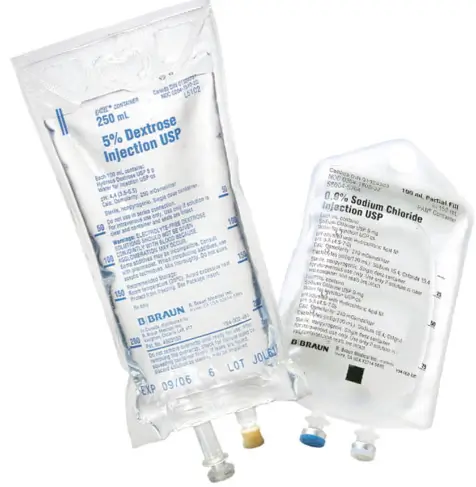
US$377.88
Product Details
- Braun L5101 dextrose water 5% is an IV solution that not only replenishes hydration in the body but also provides the necessary calories. This is often administered in people who have severe dehydration as well as electrolyte imbalance. Therefore, while learning how to choose the right IV solution for fluid replenishment, these D5W should be selected. The product comes in a flexible plastic bag and has a capacity of 500 ml.
B. Braun L7500 Lactated Ringer’s Solution IV 1000 mL CS/12
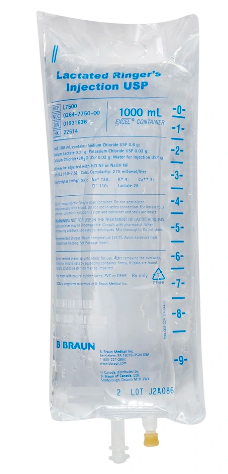
US$533.33
Product Details
- Braun L7500 lactated Ringer’s solution is one of the most used IV solutions in healthcare facilities and is often given preference while learning how to choose the right IV solution. It is a combination of sodium chloride, potassium chloride, as well as sodium lactate. The product is employed for the replenishment of electrolytes and comes in 1000 ml plastic packaging.
Grifols 729620 IV Injection Solution Sodium Chloride 0.9% 500mL Bag 20 EA/CS
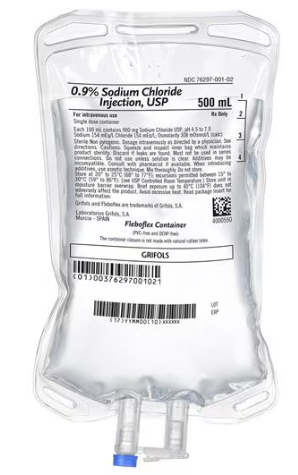
US$579.88
Product Details
Grifols 729620 IV injection solution is a product that has 0.95 sodium chloride as its chief electrolyte. The product is sterile and free from any kind of preservatives. Moreover, the packaging does not contain DEHP as well as PVC which may leach into the product.
Hence, while learning how to choose the right IV solution for nutrients or medication delivery, this Grifols 729620 IV injection solution should be your first choice.
*Note: The prices mentioned in the article are taken from the Health Supply 770 website. These may vary over time.
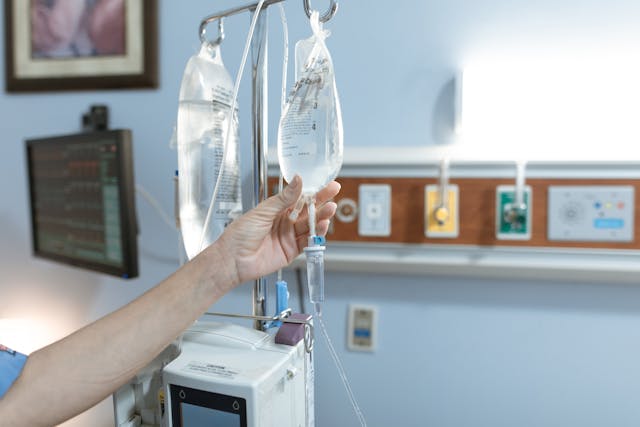
IV solutions are essential for patients who cannot take nutrients and medications via the oral route
The different kinds of IV solutions mentioned in the article while learning how to choose the right IV solution, along with many other medical supplies, can be ordered from Health Supply 770, a reliable name when it comes to medical products. They have a 30-day money-back guarantee and provide your products to you in the shortest possible time. Click the link given in the article to check out the wide range of IV solutions.
Bottom Line
IV solutions are essential in healthcare because of the several benefits they bring. These are employed for the management of multiple medical conditions including traumatic injuries, burns, dehydration, as well as electrolyte imbalance among others.
Almost every hospitalized patient is administered some kind of IV solution depending upon their needs and it is important for the healthcare provider to learn how to choose the right IV solution for their patient.
Apart from administering them on their own, these IV solutions can also serve as a base for the delivery of certain medications. In addition, nutrients can also be delivered via IV solutions for patients who require intravenous food supply.
Overall, IV solutions are of great importance and should be kept in stock in healthcare facilities owing to their extensive use. For purchasing the different kinds of IV solutions, reliable vendors like Health Supply 770 should be approached. They ensure the provision of quality products along with satisfactory services.
References

PhD Scholar (Pharmaceutics), MPhil (Pharmaceutics), Pharm D, B. Sc.
Uzma Zafar is a dedicated and highly motivated pharmaceutical professional currently pursuing her PhD in Pharmaceutics at the Punjab University College of Pharmacy, University of the Punjab. With a comprehensive academic and research background, Uzma has consistently excelled in her studies, securing first division throughout her educational journey.
Uzma’s passion for the pharmaceutical field is evident from her active engagement during her Doctor of Pharmacy (Pharm.D) program, where she not only mastered industrial techniques and clinical case studies but also delved into marketing strategies and management skills.













